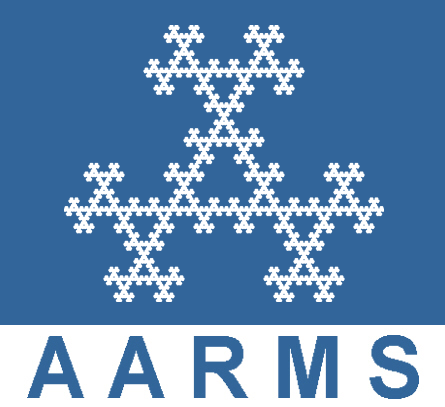2017 CMS Winter Meeting
Waterloo, December 8 - 11, 2017
- ANUP DIXIT, University of Toronto
On the Generalized Brauer-Siegel Theorem [PDF]
-
For a number field $K/\mathbb{Q}$, the class number $h_K$ captures how far the ring of integers of $K$ is from being a PID. The study of class numbers is a theme in number theory. In order to understand how the class number varies upon varying the number field, C. L. Siegel showed that the class number times the regulator tends to infinity in any sequence of quadratic number fields. Brauer extended this result to sequence of Galois extensions over $\mathbb{Q}$. This is the Brauer-Siegel theorem. Recently, Tsfasman and Vladut conjectured a Brauer-Siegel statement for asymptotically exact sequence of number fields. In this talk, we prove the classical Brauer-Siegel and the generalized version in several unknown cases. We also provide some effective versions of Brauer-Siegel in the classical setting.
- LIN JIU, Dalhousie University
Probabilistic and combinatorial interpretations of Bernoulli symbol [PDF]
-
The Bernoulli symbol comes from umbral calculus, with simple evaluation rule that identifying super index, i.e., power, and lower index. Recently, the probabilistic interpretation allows to view the evaluation as expectation of the Bernoulli random variable, having hyperbolic secant square as its density on the whole real line. Further study on the corresponding moment problem, cumulants, especially orthogonal polynomial sequence and continued fractions, links Bernoulli numbers to generalized Motzkin numbers, providing combinatorial interpretations.
- ARPITA KAR, Queen's University, Kingston, Canada
On a Conjecture of Bateman about $r_5(n)$ [PDF]
-
Let $r_5(n)$ be the number of ways of writing $n$ as a sum of five integer squares. In his study of this function, Bateman was led to formulate a conjecture regarding the sum $$\sum_{|j| \leq \sqrt{n}}\sigma(n-j^2)$$ where $\sigma(n)$ is the sum of positive divisors of $n$. We give a proof of Bateman's conjecture in the case $n$ is square-free and congruent to $1$ (mod $4$). This is joint work with Prof. Ram Murty (Queen's University).
- FEI MENG, The University of Waterloo
Valuation of Hedge Fund Investments under Alternative Fee Structures [PDF]
-
We investigate the optimal withdrawal time of a first-loss or shared-loss hedge fund fee structure from an investor's perspective. Given that a hedge fund dynamic follows a geometric Brownian, calculating the optimal withdrawal time entails solving an optimal stopping problem with a continuous piece-wise linear payoff function. In particular, we explicitly solve the problem in the infinite horizon case. Next, we show that there exist two monotonic and continuous early exercise boundaries and derive an early exercise premium integral representation in the finite horizon case. Finally, we analyze the asymptotic behavior of the early exercise boundaries near maturity.
- BRYCE MORSKY, University of Pennsylvania
Cheater-altruist synergy in immunopathogenic ecological public goods games [PDF]
-
Much research has focused on the deleterious effects of free-riding in public goods games, and a variety of mechanisms that suppresses cheating behaviour. Here we argue that under certain conditions cheating behaviour can be beneficial to the population. In a public goods game, cheaters do not pay for the cost of the public goods, yet they receive the benefit. Although this free-riding harms the entire population in the long run, the success of cheaters may aid the population when there is a common enemy that antagonizes both cooperators and cheaters. Here we study models in which an immune system antagonizes a cooperating pathogen. We investigate three population dynamics models, and determine under what conditions the presence of cheaters help defeat the immune system. Our results give support for a possible synergy between cooperators and cheaters in ecological public goods games.
- SIDDHI PATHAK, Queen's University
Derivatives of L-series and generalized Stieltjes constants [PDF]
-
Generalized Stieltjes constants occur as coefficients of ${(s-1)}^k$ in the Laurent series expansion of certain Dirichlet series around $s=1$. The connection between these generalized Stieltjes constants and derivatives of $L(s,f)$ for periodic arithmetical functions $f$, at $s=1$ is known. We utilize this link to throw light on the arithmetic nature of $L'(1,f)$ and certain Stieltjes constants. In particular, if $p$ is an odd prime greater than $7$, then we deduce the transcendence of at least $(p-7)/2$ of the generalized Stieltjes constants, $\{ \gamma_1(a,p) : 1 \leq a < p \}$, conditional on a conjecture of S. Gun, M. Ram Murty and P. Rath.
- FRANCOIS SEGUIN, Queen's University
A lower bound for the two-variable Artin Conjecture [PDF]
-
In 1927, Artin conjectured that any integer other than -1 or a perfect square generates the multiplicative group $\mathbb{Z}/p\mathbb{Z}^\times$ for infinitely many $p$. In a 2000 article, Moree and Stevenhagen considered a two-variable version of this problem, and proved a positive density result conditionally to the generalized Riemann Hypothesis by adapting a 1967 proof by Hooley for the original conjecture. During this talk, we will prove an unconditional lower bound for this two-variable problem. This is joint work with Ram Murty and Cameron Stewart.





